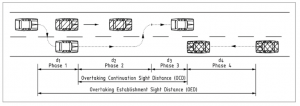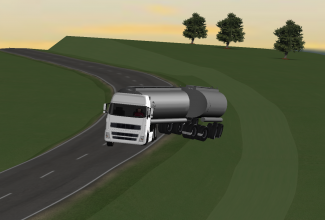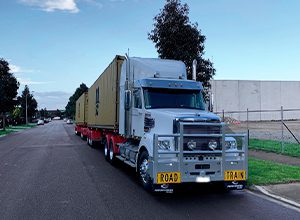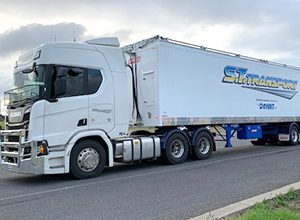Route assessment for overtaking provision
Assessing overtaking provision is an important aspect in understanding the suitability of existing roads to accommodate high-productivity heavy vehicle combinations. Project summary by Adam Ritzinger.
Current methods of evaluating overtaking provision are based on old empirical data, which combined with the complexity of the assessment method itself often results in sub-standard outcomes. Advantia investigated possible improvements to the overtaking provision assessment methodology used by practitioners in the Queensland Department of Transport and Main Roads.
The provision of suitable overtaking opportunities is crucial as it affects both Level of Service (LoS) and road safety outcomes. A road with suitable overtaking provision will provide sufficient opportunities to overtake such that the movement of traffic is not impeded beyond the desired service level, for the mix of vehicles that the road accommodates.
Overtaking provision is particularly relevant for rural roads that do not have overtaking lanes and may be used by high-productivity heavy vehicles such as 30-metre A-doubles. Such vehicles are longer than conventional B-doubles, and will require more space to safely overtake.

The National Heavy Vehicle Regulator’s Route Assessment Guidelines outline a method for assessing overtaking provision. The Guidelines also provide minimum sight distance values for determining if road sections without overtaking lanes provide enough clear space to safely perform an overtaking manoeuvre. Those sight distances were adapted from Austroads publications that sourced data from Australian research conducted in the late 1970’s.

There are known issues with the current method that limit its practicality, including:
- the assessment parameters (particularly sight distance) are difficult to measure in the field
- the establishment sight distances required for 100 km/h zones are 1,000 m or greater, which relatively few roads would be able to realistically provide
- the current recommended sight distances are based on empirical field data that was collected in the 1970s (i.e. over 30 years ago).
For many years the complexity of the assessment method resulted in it being utilised predominantly as a check when designing new roads, rather than as a tool in the assessment of routes. Recent assessment exercises that utilised the method consistently found that the assessment criteria were not satisfied.
Additionally, modern passenger and heavy vehicles have improved acceleration performance compared with the average fleet from 30 years ago, which means that the sight distance requirements of modern drivers could reasonably be lower than the currently accepted values.
To investigate this issue, Advantia conducted a field-test program to obtain a small sample of acceleration performance data relevant to the modern vehicle fleet and used the field data to calibrate a custom software tool that ultimately re-calculated sight distance requirements.
Vehicle performance was measured for six different vehicle types; three passenger vehicles, and three heavy vehicles. All vehicles were instrumented with Advantia’s data acquisition system. The system comprises a centralised data logger, separate sensor boxes, and a GPS.

Advantia’s field tests and software tool enabled the objective assessment of the suitability of the currently accepted sight distance values. It provided robust data on overtaking provision for the Department of Transport and Main Roads, which enabled them to consider the suitability of the current approach and make an informed decision for the future.
Please contact Advantia for more information.








